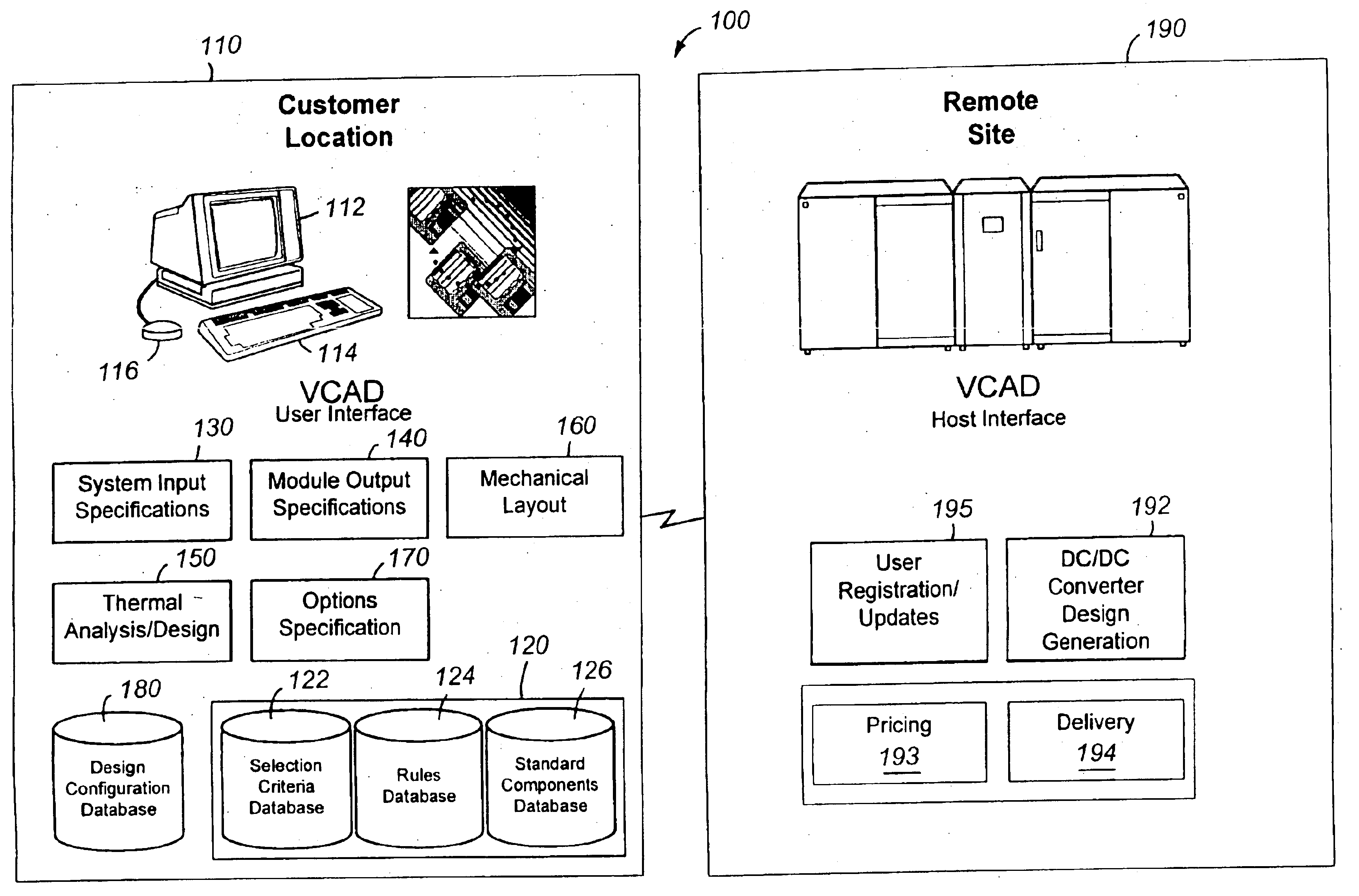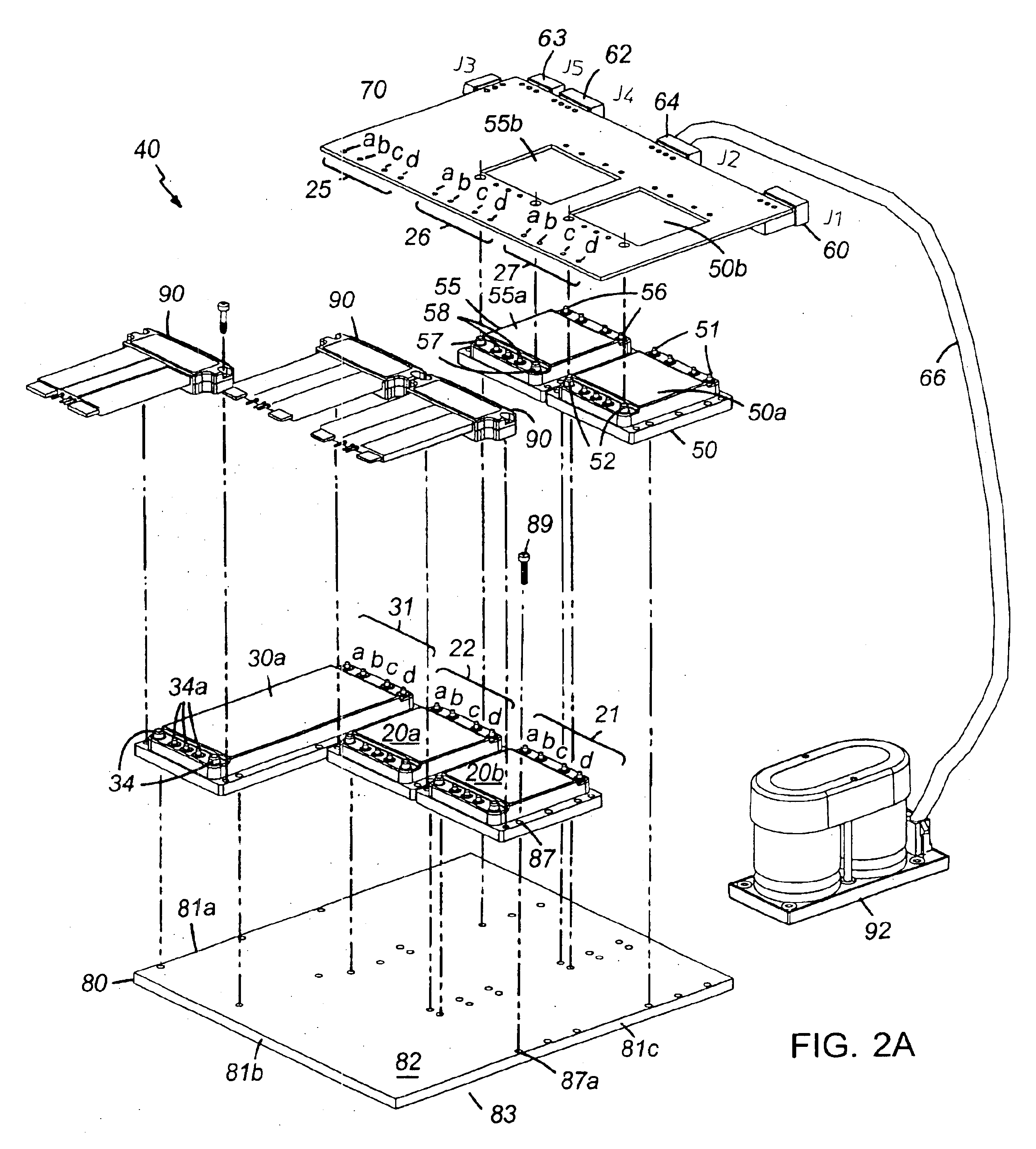Fabrication rules based automated design and manufacturing system and method
a technology of automatic design and manufacturing system, applied in the direction of stacking articles, instruments, de-stacking articles, etc., can solve the problems of time-consuming and laborious, time-consuming, and labor-intensive, and achieve the effect of reducing labor intensity, reducing labor intensity, and reducing labor intensity
- Summary
- Abstract
- Description
- Claims
- Application Information
AI Technical Summary
Benefits of technology
Problems solved by technology
Method used
Image
Examples
Embodiment Construction
Referring to FIG. 1, high density, modular DC-DC converters are available in a wide variety of input voltage, output voltage and power levels. For example, three different styles of power converter modules micro 10, mini 20, and maxi 30 (corresponding, for example, to the 700, 800, and 900 Series of DC-DC converters manufactured by Vicor Corporation, Andover, Mass., USA) are shown in FIG. 1. For a given combination of input and output voltage ratings (e.g., 48 V nominal input, 5 V output; or 300 V nominal input, 48 V output), the maximum amount of power which can be delivered by a power converter module in a particular package is related to the package size. A converter module in package style 10 might be rated to deliver up to 150 Watts of output power at a baseplate 5 temperature rating of 100 degrees Celsius for example. Similarly, converter modules in package styles 20 and 30 might be respectively rated to deliver up to 250 and 600 Watts of output power at the same 100 degrees C...
PUM
 Login to View More
Login to View More Abstract
Description
Claims
Application Information
 Login to View More
Login to View More - R&D
- Intellectual Property
- Life Sciences
- Materials
- Tech Scout
- Unparalleled Data Quality
- Higher Quality Content
- 60% Fewer Hallucinations
Browse by: Latest US Patents, China's latest patents, Technical Efficacy Thesaurus, Application Domain, Technology Topic, Popular Technical Reports.
© 2025 PatSnap. All rights reserved.Legal|Privacy policy|Modern Slavery Act Transparency Statement|Sitemap|About US| Contact US: help@patsnap.com



